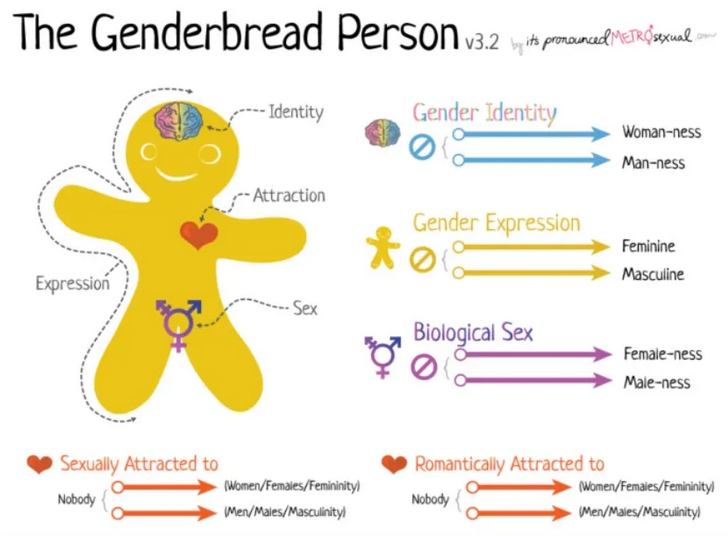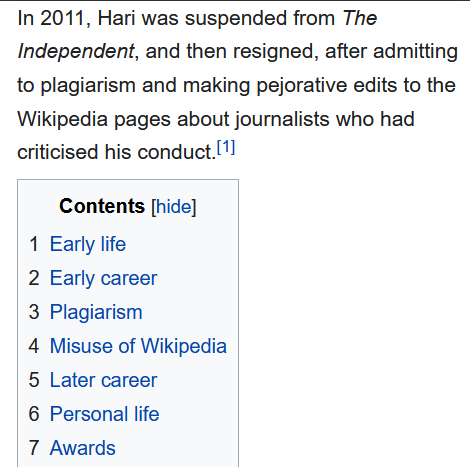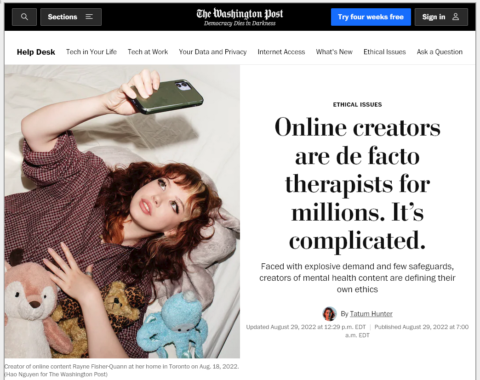Professor of Rock
Published 16 Jun 2021The story of the 1979 classic “Sultans of Swing” by Dire Straits. Mark Knopfler was inspired to write the song after witnessing a band playing Dixieland Jazz in a dive bar.
Hey music junkies and vinyl junkies Professor of Rock always here to celebrate the greatest artists and the greatest 70s vinyl songs of all time for the music community and vinyl community.
If you’ve ever owned records, cassettes and CD’s at different times in you life or still do this is your place Subscribe below right now to be a part of our daily celebration of the rock era with exclusive stories from straight from the artists and click on our patreon link in the description to see our brand new show there.
Mark Knopfler was performing in London’s pub scene in the mid 70s, living on next to nothing in a flat with aspiring bassist John Illsley. Knopfler’s younger brother, David, introduced him to Illsley, following the dissolution of Mark’s first marriage. Mark, John, and David teamed up with “Pick” Withers, another London area musician, to form a group they aptly named Dire Straits.
The 4 members all had day jobs, but they lived a “hand to mouth” existence — struggling to pay their utilities bill. One rainy evening, Mark & a few friends decided to go to a nearby pub for a couple of pints in a dilapidated (dih-lap-ih-dated) section of South London. The pub was nearly empty, except for a couple of guys playing pool. In a corner of the bar, a band was playing — seemingly unaffected by the lack of an audience.
The band was “blowing Dixie — double-four time” as Knopfler would later transcribe. “Dixie double” is a performance style that was popularized by Django (jang-go) Reinhardt (rain-hart), and in the early days of Les Paul — where the guitar, bass, and drums are played harmoniously at a very fast pace.
If you’re playing “Dixie double-four time” as Knopfler describes in “Sultans of Swing”, you are playing twice the speed of the normal 4/4 time, and the drummer is working extra hard to keep up with the tempo. Knopfler remembered asking the hapless Dixie outfit to play “Creole Love Call” or “Muskrat Ramble”, much to the band’s delight, because they were undoubtedly shocked that someone in the pub actually knew some of the songs in their repertoire.
At the end of the band’s performance, the leader announced triumphantly to the 3-4 people in attendance … “We are the Sultans of Swing!”, as if they were playing in front of a packed house of ardent fans. Mark found the irony of the scene very amusing; a frumpy looking band playing a hole in the wall pub in a dodgy part of town, declaring themselves “the sultans of swing”.
To be a “sultan” would be to rule over a country, or hold a dynasty over people. The term originated from the Arabic language meaning to have “authority” or “rulership” over others. The true “Sultans of Swing” would’ve been the “swing” genre’s originator Fletcher “Smack” Henderson in the late 20s & 30s, or one of his revered disciples, Duke Ellington & Benny Goodman.
Babe Ruth and the Yankees legendary murderers row of the 20s if you’re talking baseball.
(more…)
October 5, 2022
The Amusing Inspiration Behind Dire Straits Classic 70s Hit | Professor of Rock
October 4, 2022
“On the cover of the Rolling Stone“
Ted Gioia discusses the oddly nostalgic turn modern music writing has taken:
The first thing you notice is the sheer abundance of music magazines on display. We must truly be living in a golden age of music writing if it can support so many periodicals.
I was very happy to see this — at least at first glance.
But at second glance, I started to notice the cover stories.
Lavish attention is devoted here to artists who built their audience in the last century — Miles Davis, David Bowie, Buddy Holly, Blondie, Led Zeppelin, Björk, Motorhead, The Cure, etc. That’s an impressive roster of artists (well, most of them), but they don’t really need the publicity nowadays — they were legends before many of us were born.
Even the magazine names reveal a tilt toward nostalgia. I can’t make out the titles in their entirety, but I see the words Retro, Vintage, and Classic. Publishers are shrewd people, and they don’t put these words in large font unless the audience responds to them.
Maybe print media is nostalgic by definition — if, as we’re repeatedly told, young people don’t read things on paper. (I’m skeptical of that claim, but I hear it all the time.) Yet when I visit the websites, I see the same backward glance. You can’t click on Rolling Stone‘s homepage or Twitter feed without finding some massive list article — touting the “100 Best Songs of 1982” or “The 100 Greatest Country Albums of All Time“. You will find similar retro celebrations at almost every other music media website with a large crossover readership.
Editors love lists nowadays, especially of all-time greats. If I pitch an article like that, the whole editorial team starts salivating — you can even feel the moisture over Zoom — in sharp contrast to any proposed article on a young, unproven musician. Those pitches get pitched right back in your face. You might conclude that we have now arrived at the end of history, with all greatness residing in the past. The editors, at least, must think so.
Things weren’t always like this. Go back and look at old issues of Rolling Stone or Downbeat or some other music magazine — there were years in which every cover story was about a living person and usually someone young with something new to say.
Those days are gone. But here’s the most ironic fact of all — the actual cover stories haven’t changed.
By the way, I’d like to know when Rolling Stone published its first “all-time greats” list — that was the moment when nostalgia first entered the rock bloodstream, a vital force previously resistant to sentimental yearnings for the past.
October 3, 2022
October 2, 2022
Robert Heinlein’s “Crazy Years” have nothing on real headlines in 2022
Ed West on what he calls the “triumph of the blank slate” in western culture:
As a depressive conservative who always sneered at the new atheist movement, I’ve enjoyed a certain, almost masochistic smugness about the way the sharp decline in American religious practice has led to a proliferation of wacky beliefs. I told you so, I laugh, as our boat heads for the rocks and certain doom for all of us. And every month I read something else in the media which makes me think, with the best will in the world and a sincere belief in improving our lot, that country’s ruling class is losing its grip on reality.
To take one recent example, an article in the Atlantic recently made the case that separating sport by sex doesn’t make sense, because it “reinforces the idea that boys are inherently bigger, faster, and stronger than girls in a competitive setting — a notion that’s been challenged by scientists for years”.
The author stated that “though sex differences in sports show advantages for men, researchers today still don’t know how much of this to attribute to biological difference versus the lack of support provided to women athletes to reach their highest potential”.
Quoting an academic who claim “that sex differences aren’t really clear at all” the author reported of some studies showing that “the gap they did find between girls and boys was likely due to socialization, not biology”.
On a similar theme, a few weeks back the New York Times ran a piece arguing that “maternal instinct is a myth that men created”. In the essay, published in the world’s most influential newspaper, it was stated that “The notion that the selflessness and tenderness babies require is uniquely ingrained in the biology of women, ready to go at the flip of a switch, is a relatively modern — and pernicious — one. It was constructed over decades by men selling an image of what a mother should be, diverting our attention from what she actually is and calling it science.”
Even the most prestigious science magazines increasingly make claims about sex that a decade ago would have seemed wacky. Just recently, Scientific American stated that “Before the late 18th century, Western science recognized only one sex — the male — and considered the female body an inferior version of it. The shift historians call the ‘two-sex model’ served mainly to reinforce gender and racial divisions by tying social status to the body.”
If you find any of these beliefs strange, then you might need to “educate” yourself about “the science” because this is the direction of travel now. This kind of stuff is everywhere, growing in popularity in all areas, but all ultimately having the same common inheritance — the blank slate.
Yet what is strange is that such ideas are triumphant, even as the scientific evidence against them mounts up, with the expanding understanding of genetics and the role of inheritance. The tabula rasa should by all rights be dead, indeed it should have been killed twenty years ago with the publication of one of the most important books of the century so far, Steven Pinker’s The Blank Slate.
With its subtitle “the modern denial of human nature”, Pinker’s worked looked at the various ideas that had emerged out of academia and into wider society: that rape was not about sex, that hunter-gatherer societies were peaceful, that sex differences were learned, all of these beliefs having the common theme that humans are born with infinitely malleable minds and that that life outcomes are entirely shaped by society.
Pinker felt, quite reasonably, that many of these comforting beliefs were on the way out. Of the idea that differences in intelligence were entirely environmental, he wrote that “even in the 1970s the argument was tortuous, but by the 1980s it was desperate and today it is a historical curiosity”. And yet this historical curiosity continues to flourish, and 20 years after publication, the blank slate is stronger than ever. More so than in 2002, it’s taboo to discuss the genetic components of human intelligence or the biological factors involved in differing male and female behaviour. The ground has shifted – towards the blank slate.
Pinker is an optimistic Whiggish liberal who has since produced books looking at the decline of violence and making the case that things are getting better — that’s taken a wobble this decade, but I think he’ll be proven right, even if I think the new atheist-aligned cognitive psychologist has a slight blind spot about religion. In the Blank Slate he argued that worthy progressive goals should not rest on untrue scientific assumptions about human nature. When those ideas are proven false, the political argument will crumble too — and yet this hasn’t happened. Instead the taboos just grows stronger.
October 1, 2022
Johann Hari’s unlikely career resurrection
I have to admit that Johann Hari was pretty much just a British media personality I had a vague awareness of, but I hadn’t paid much attention to him (his Wikipedia sockpuppeting came to my attention in 2011, and I quoted from an article he wrote for the Los Angeles Times in 2019). As this post by Ben at Ben’s Comedy News outlines, I’d largely missed the rest of his fall and rise:
Nowadays, Johann Hari is known as a pop psychology expert. He does TED talks and writes books with simplistic messages like:
- your smartphone is ruining your attention span! (Stolen Focus)
- you should cure your depression by throwing away your medication and joining a book club! (Lost Connections)
- the war on drugs is bad! (Chasing the Scream)
His books get positive blurbs from distinguished thinkers, such as the comedian and twink admirer Stephen Fry, the listicle entrepreneur Arianna Huffington, the feminist and sex offender’s wife Hillary Clinton, the comedian and fake revolutionary Russell Brand, and the TV doctor Doctor Rangan Chatterjee.
But when you look at how actual experts assess his work, it’s not so positive. The neuroscientist Dean Burnett responded to an extract of Lost Connections in his Guardian column, under the title Is everything Johann Hari knows about depression wrong? Burnett points out that:
despite Hari’s prose suggesting he’s uncovered numerous revelations, pretty much everything he “reveals” is well known already
Hari, in pursuit of an anti-anti-depressant narrative, makes the claim that you can be diagnosed with depression and put on medication immediately after a traumatic event like losing a child, which Burnett (who teaches psychiatry) describes as:
at best a staggering exaggeration, at worst an active fabrication to support a narrative.
But this article isn’t about what Johann Hari has been doing recently. It’s about what Hari was up to before he reinvented himself as some kind of expert, back when he was a journalist who ended up being disgraced.
It’s about how Hari has somehow rounded allegations of serious fabrication down to a record of minor plagiarism. It’s about how in trying to attack his critics, he seems to have inadvertently revealed his penchant for little brother incest fantasies with a troubling racial dimension. It’s about how I tried to fix the record on Wikipedia, and ran into trouble as Wikipedia’s policies collided with the sorry state of British journalism.
Back in 2010, Johann Hari was a star newspaper columnist (if you’re a millennial that means he wrote hot takes that got lots of clicks; if you’re Gen Z, think of him as a viral TikTok star but with words on paper).
In 2011 he was disgraced and kicked out of the profession.
Now if you look at the articles that were written about his comeback, like this New Statesman piece or this Guardian piece you’d conclude that he was disgraced for two things:
plagiarism – specifically, taking quotes from text someone had written in a book or article, and pretending that the person had said it directly to him
abuse of Wikipedia – in particular, using a fake identity to edit the pages of professional rivals with false allegations
I followed the whole Hari affair pretty closely at the time (I didn’t like him because he had been a cheerleader for the Iraq War, so I enjoyed watching his career go down in flames).
When his latest book came out a month ago, I looked at his Wikipedia entry. Wikipedia saves the history of all the different versions of each page, so here is a link to what I saw when I did that.
And here’s part of the summary and the table of contents:
The whole article struck me as weird because it didn’t mention two things I clearly remembered:
- Hari got in trouble, not just for minor plagiarism, but for allegedly making things up completely.
- Even more memorably, the fake identity he used to edit Wikipedia, “David Rose”, was also used to author an incest kink porn story with a hilarious title.
You can see why Hari (and whatever reputation management consultants he has working for him) would want to focus on the “plagiarism” angle. It’s not good to pass off a quote you got from someone’s book as something they told you directly, but it’s not as serious as completely inventing something. I suppose technically it’s plagiarism because you’re pretending you elicited the quote in an interview and you’re not citing the original book; but it’s a lot better than the typical case of plagiarism that involves passing off someone else’s work as your own. Hari’s defence is that he was “cutting corners” because he was under so much pressure due to his meteoric success at young age, etc. etc.
“Father” – Fritz Haber – Sabaton History 113 [Official]
Sabaton History
Published 29 Sept 2022Fritz Haber is a controversial historical figure. He was responsible for scientific advances that fed billions, yet he created weapons of mass destruction that filled millions with terror. This is his story.
(more…)
QotD: The Left does not handle political reverses gracefully
While this [recent progressive losses on religious school funding, gun control, voter ID, the repeal of Roe v. Wade] all may seem like fun and games to us, keep in mind that for the Left, this is the most serious business they’ve had to face since the 1960s. Being reversed in the courts — repeatedly, openly — represents a massive monkey wrench in their “march of progress”. And as I discussed last week, the Left has been accelerating the imposition of its agenda over the past two decades to the point that it cannot slow down or back off without the risk of losing everything. It’s truly all or nothing for these folks now. And they realise this.
The Left is absolutely right to fear all of this because these things represent the furtherance of a growing trend towards decentralisation that I’ve been talking about recently. This is bad for them because the Left’s whole program — and I’m talking about going back for at least two centuries — has been based on the centralisation of power into its own hands. Everything the Left does is predicated upon the “principle” of coalescing power into its hands in government, NGOs, woke corporations, and a constellation of other institutions that all coordinate together to advance the progressive agenda. Due to our place in our current demographic-structural secular cycle, this decentralisation is nigh inevitable, but that doesn’t mean the Left won’t (literally) burn through a lot of social capital fruitlessly trying to stop it.
These recent Supreme Court rulings represent real loses for their program at the most sovereign level in our government. This, in turn, signals openly their loss of control over that institution. This is why we’re seeing increasingly desperate ideas being floated for ploys to take back the SCOTUS, from packing the Court to (somehow) convincing 2/3 of the states to gut it completely. They know they’ve lost control over it as an institution, so they’re perfectly willing to dynamite it (hopefully not meaning that literally), like an ex-girlfriend who takes a baseball bat to a guy’s X-Box rather than just giving it back to him like a sane person would do. In the space of a few short years, the SCOTUS has gone from hero to zero in the Left’s eyes, since for them everything is situational in nature. Once something, anything, outlives its usefulness to them, it goes up against the wall.
The thing to understand from this is that these losses the Court has handed to the Left are real things. They’re not just some kind of plot to “mobilise their voters” to win the midterms in November. While lefties may often be cunning, they are also arrogant and in many ways kind of dumb. These people are really not out here playing some grandmaster game of four-dimensional chess. They’re desperate, which is why they’re willing to engage in such blatant attempts at gaming the system through naked procedural manipulation. They’re the ones who are suddenly finding themselves in the place of having to operate outside of “our sacred norms” by refuting the legitimacy of institutions that go against them.
Bear in mind that the Left’s entire view of legitimacy is predicated on this “ever-forward march of progress”. To “move backwards” is to show weakness, to reveal a chink in the armour of the dialectic of inexorable progress. This sense of legitimacy, in turn, was based upon their capture of the various power-generating and power-wielding institutions, including the Supreme Court, since the “right” people now had possession of the means to remake society. What a lot of people forget is that the whole “march of progress” since the mid-1960s occurred because of this institutional takeover. Their judicially imposed agenda has never really “won the argument” on any issue. They just used social and political force to achieve their goals, followed up by media-driven social pressure and anarchotyranny to “encourage” conformity among the general population. So yeah, especially with something like the repeal of Roe v. Wade, their whole program is in jeopardy. The post-Roe stance on abortion adopted in 1973 was the truly radical stance on this issue, but they don’t want you to realise this.
Theophilus Chilton, “The Left Is in a Precarious Place”, The Neo-Ciceronian Times, 2022-06-29.
September 30, 2022
QotD: Many media people are folks “who Don’t Read Shit” about the stories they “report” on
Without wading back into the exceptionally complicated details of that long controversy, I learned two things from the experience that have never left me.
First, as I traveled to Boston to go to court, and as I wracked up PACER charges downloading legal briefs and judicial orders, I would have email exchanges with newspaper reporters who wanted me to tell them what had happened. I would shoot back an email message that said, “Judge’s ruling attached,” and they would reply, “Yeah, saw the attachment, what does it say?”
Over two years, through events in a trial court and in an appellate court, with multiple parties pursuing complicated and divergent courses, reporters would not read. They wouldn’t read the 40-page legal briefs filed by the lawyers for all the competing sides, but they also wouldn’t read a three-page order from a judge. They would not read, period. They wanted the tl;dr, in a sentence or two. “Yeah, what’s it say?”
In our own moment, I remain extremely confident that the flood of bullshit like this […] is being slopped out by people who DRS — who Don’t Read Shit — about the topic they cover. Somebody in a government agency shot this dude an email message that said COVID VACCINES ARE MIRACLE DRUGS EVERYONE SHOULD GET THEM, and he said to himself, “Miracle drugs, got it!” We’re plagued by an army of people who pour “information” into the world based on two Twitter posts and a text message, after a full three to five seconds of deep thought …
Chris Bray, “Chris Bray is Stupid and Evil”, Tell Me How This Ends, 2022-04-07.
September 28, 2022
QotD: Yearning for the “endless now”
My guess — and I am NOT an art historian, I can’t stress that enough — is that this reflects the increasing emphasis on the individual [in the late 15th century]. Which, again, is tied to the acceptance of linear time — the desire to be commemorated as an individual, unique person, not as a type. The more people who could afford portraits, the more people wanted them, and the more the individual commemoration mattered. High-medieval “portraits” are extremely accurate as funeral sculptures, but illustrations in manuscripts are often little better than stick figures.
By the (I think) 16th, and certainly by the 17th, centuries, you’ve got portraits of people as Classical throwbacks — contemporary figures tricked out in Roman togas and whatnot. This is the full acceptance of linear time — you can move a distinct individual both forward and back along not just the course of his life, but the course of linear history.
Contrast this to the Juggalos, whose first impulse in any situation is to take a selfie … but who never, ever look at those selfies. Basic College Girl “culture” is often described as narcissistic — lord knows I’ve done it enough myself — but the funny thing is, for as self-involved as they are, they have almost no pictures of themselves hanging around. They don’t decorate their office cubicles with pictures of their families. Nothing could be easier than “flipping” through a digital photo “book”, but they never do. They go to extraordinary lengths to arrange the perfect selfie … but then they could instantly delete it, for all the impact it has.
I think this is because they actively shun the idea of linear time. When I was a young man, every girl had a photo album in her dorm room, and part of the “getting to know you” process was flipping through it with her. Half the fun was seeing the brutal fashions of yesteryear; you both had a good laugh over it.
I think that would be actively painful for Juggalos, and not just because they can’t stand to have others see them as less than 100% perfect at all times. Rather, I think the problem is the fundamental one — they don’t want to be reminded that time passes.
They want the endless now. They want to be ghosts.
Severian, “The Ghosts (II)”, Founding Questions, 2022-05-18.
September 27, 2022
Sarah Hoyt on how Americans are mis-understanding the TV show Bridgerton
I don’t watch TV, so I haven’t seen the show myself, but apparently a lot of Blacks in the US are taking away the multi-racial casting of a parallel-universe TV show set in the Regency period as being a true representation of British history:
Anyway, all this came to a head with my watching the Bridgerton series. As other people know, it bothers the living daylights out of me to cast well-known historical figures as another race. Not because there can’t be decent actors of another race, but because I know there is a percentage of the population who takes fictional movies and shows as revealing “the truth”.
My mom, who is better educated (alas) than most American high school graduates is one of those. She will adapt her vision of the past according to some crazy movie she just watched. (The number of arguments I’ve had.)
For those who haven’t watched Bridgerton (bog standard regency romances, with gorgeous, if not period-accurate clothing) they cast a certain number of noblemen as black or indian or other “races” and the English Queen in Bridgerton is black.
The buried history in the mini-series (suggested and Heinleined in) is that black and white people coexisted in England side by side, until the king married a black Queen, and then suddenly mixed marriages were allowed.
This is obviously a fantastic parallel world history. Yes, there were black people in England in the regency. I’m sorry to tell you there were very few and 99% of them were slaves or servants brought by people who had lived in Africa.
There was no “black nobility” and no system of apartheid.
HOWEVER as we found out, American people absolutely believe this nonsense. They believe Queen Charlotte (mostly German, honestly) was “black” based on a very bad portrait and rumors of a Moorish ancestress. (Note this rumor was almost certainly political slander. Also that Moor at that time in the peninsula depending on whether in the South or the North might mean slim, small and tan, but did not mean AFRICAN.) Weirdly the best debunking I found was from Quora.
HOWEVER I also found endless pages of well-educated black-Americans celebrating Queen Charlotte for “Black history month”.
Let me also point out that both the Queen and her husband (Yes, mad King George) were ardent abolitionists and that did she have any legitimate hint of African blood ALL the opposition would have fixated on this, and the caricatures would have been next level. However this never happened. Queen Charlotte was and looked German, even if a portrait can imply “stereotypical” African features … As long as you remember that those features exist in a lot of other races, and that a lot of them are also Neanderthal.
Sure, if you go with the one drop theory, Queen Charlotte was black. So is everyone else. EVERYONE else, even those whose 23andme swears they’re pure Scandinavian. Because sometime in the last two thousand years all of us got an African ancestor, somewhere, on one of the many, many lines that fed into our family. (Note genealogy is also a lie to some extent, since it’s impossible to follow every single female (if you’re tracking the male. Vice versa otherwise) line that dropped into your family, and everyone who fed into every other of those lines.)
The problem is that it was the rats in the head of the American black producers of the series that led them to create this entire parallel universe which they THINK IS TRUE on the basis of “well the queen was black”. WITHOUT LOOKING.
And now those rats are reproducing everywhere, but most notably in black American heads, who now believe that “Well, the king married a black queen, so it must be true that the Americans rebelled to keep enslaving the black people”.
This is all not just arrant nonsense, but poisonous bullshit, and has no contact whatsoever with reality.
What can we do about it?
Correct it, ruthlessly, whenever we come across it. And keep pointing out that a queen who was blond and blue eyed was not in fact “black” unless everyone is. And that reading racial tea leaves is a pseudo-science, like phrenology.
I would very much appreciate if we could put this behind us so may family doesn’t keep getting asked “what is your racial background” by complete strangers. (And not just census takers, whom I like to answer with “human”.)
Look, in the end, the darkest African and the lightest Scandinavian have more in common with each other than not. To pretend otherwise is arrant nonsense.
Yes, our far-distant ancestors developed racism as a necessary survival tool (along with the uncanny valley discomfort) because you could fall into the hands of another hominin band and become “food”. (The chimps are less discriminating and will also eat babies of their own band.)
We are now past that, and I would like it not to return. Yes, there are physical characteristics that go with certain character traits, but it’s harder to track than you think, and they’re often things that have nothing to do with race, let alone racial stereotypes.
We all have one drop of slaves and enslaved, or saints, sinners, murderers, murder victims, kings and peasants, ascetics and whores. And we all have all the inclinations of all of mankind in varying degrees.
It’s what you make of it and with it that determines whether you can wear “human” as a crown, or in fact get cast out of the human race for shoving in line.It’s time to stop with the nonsense.
September 26, 2022
Canada, a confessed “ongoing” genocidal state, has no moral grounds to criticize China, Russia, or Iran
In Quillette, Jonathan Kay expresses his frustration as Canadian Prime Minister Trudeau’s performative moral posturing and virtue signalling for his globalist comrades comes back to bite him in the ass … again:

Kamloops Indian Residential School, 1930.
Photo from Archives Deschâtelets-NDC, Richelieu via Wikimedia Commons.
… [Iranian President Ebrahim Raisi] also threw in an attack on Canada’s treatment of Indigenous peoples, declaring that “bodies of hundreds of children were discovered in mass graves in a [former residential] school.”
The issue of supposed unmarked Indigenous child graves dominated the Canadian media in the latter half of 2021. But as I reported in Quillette several months ago, no “mass graves” were ever found. In fact, even the Indigenous groups that initially reported ground-penetrating radar (GPR) survey results consistent with the possible presence of unmarked burial sites weren’t talking about “mass graves”. Rather, the invented mass-graves claim was popularized by a badly botched New York Times May 28th, 2021, story written by reporter Ian Austen. (For a definitive debunking, see Terry Glavin’s account in Canada’s National Post).
In the 16 months that have passed since the unmarked-graves story broke in late May 2021, not a single body has been found, nor any human remains. And so even the less sensational allegation that 215 individual unmarked child graves lie buried under the grounds of a former Indigenous residential school in Kamloops, British Columbia, now seems doubtful. Nor have bodies or human remains been recovered at any of the other former residential-school properties where GPR surveys were conducted.
Yet that didn’t prevent Prime Minister Justin Trudeau from lowering flags on Canadian public buildings for more than five months, nor from speaking publicly as if bodies were already being dug up. And aside from the National Post, not a single major Canadian media outlet has admitted its role in feeding the unmarked-graves social panic that exploded last year, and which often included lurid speculation that the supposed grave sites not only contained the remains of Indigenous children, but that these children had been murdered through methods worthy of a horror-movie plot.
Given this, what can Canadian public figures say to Raisi now that he’s throwing spurious moral equivalences into our faces? Nothing. In making the false claim that “bodies of hundreds of children were discovered in mass graves in a [former residential] school”, the man is merely reading our own officially sourced misinformation back to us.
This isn’t the first time that Trudeau has managed to maneuver Canada into this kind of mortifying position vis-à-vis the world’s tyrants. Last year, when Canadian lawmakers voted to denounce China’s treatment of Uighurs in western Xinjiang as a form of genocide, Trudeau and his Cabinet abstained. The suspected reasons for that move were complex. But they included the fact that Canada was, by its own description, morally compromised on the genocide file: Back in 2019, Trudeau had explicitly acceded to the (absurd) claim that Canada, too, was guilty of “genocide” — this one against Indigenous women. Indeed, according to the official report that precipitated Trudeau’s mea culpa, this supposed Canadian genocide remains ongoing.
Did D-Day win WW2? – a WW2 expert discussion
World War Two
Published 25 Sep 2022WW2 historians Indy Neidell, Spartacus Olsson, and Paul Woodadge moderated by Ryan Socash discuss the meaning and significance of D-Day from historical, current, and future perspectives. Recorded on the road while shooting in Normandy for TimeGhost’s 24-hour documentary on the events of June 6, 1944.
(more…)












